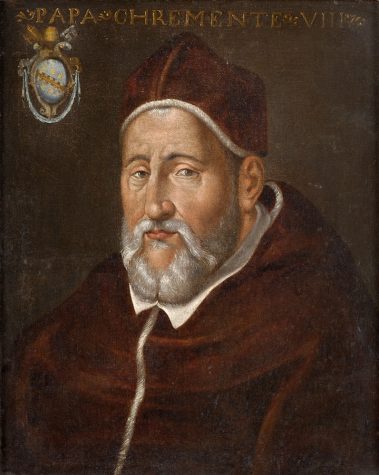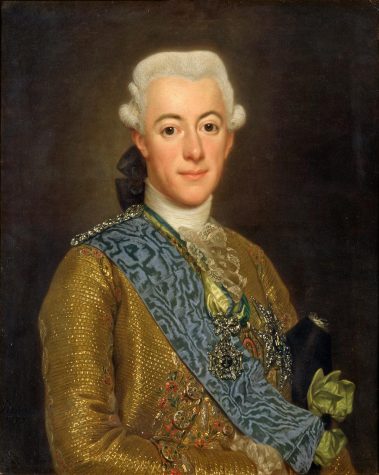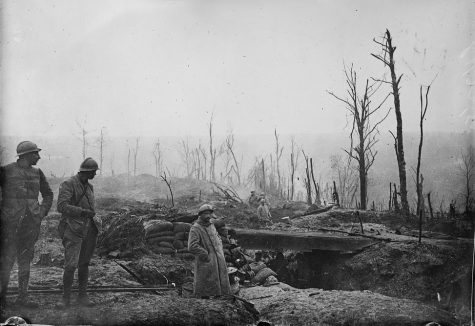Personal History Column: Satan, Death Sentences, and Flamethrowers – Some Stories About Coffee
Long before Tik did its Tokking, and even before the Star began its Bucking, people drank coffee. Though it may not be the world’s favorite caffeinated beverage (and that’s the tea), it is responsible for some absolutely insane history.
Here are just three examples:
The time the Pope saved coffee from being banned as “an invention of Satan”

Pope Clement VIII saved coffee from being banned.
The 16th century was a lovely time in European history: the Renaissance, Shakespeare, a plague, the Protestant Reformation, Galileo, another plague, the exploitation of the New World, a dancing plague, and the never-ending holy wars between Islam and Christianity. What a time to be alive (or more likely dead).
As any good Prep-year historian could tell you, this time also saw the Ottoman Empire and Venice begin trade across the Mediterranean Sea. Through this process, coffee was first introduced to Europe. Of course, with this arrival of the new and intoxicating Arab bean came accusations of it being a Satanic medium for manic possession (which frankly wasn’t entirely wrong, minus the whole Islamophobia part).
As anti-Islamic sentiments flared in Europe, so too did anti-coffee sentiments. Such sentiments reached a fever pitch in 1600, when Vatican cardinals demanded that the Pope officially condemn the drink as a “bitter invention of Satan” and ban it from all of Christendom.
The Pope at the time, Clement VIII, was more temperamental than some of his hot-headed advisors and decided to at least try the drink before making any decisions. He was presented with a cup, and upon tasting it, he reportedly smiled, laughed, and said, “This Satan’s drink is so delicious that it would be a pity to let the infidels have exclusive use of it.” Thereafter, he gave coffee his holy blessing, and Italians have really, really liked coffee ever since.
The time the King of Sweden jailed a pair of twins and condemned one to death by coffee

King Gustav III sentenced a criminal to a lifetime of drinking three pots of coffee a day.
Coffee was met with a similarly poor reception upon its introduction to Sweden in 1674. Of course, how could coffee possibly have established itself, especially in comparison to Sweden’s other culinary delights? After all, this is the country of surströmming and lutfisk. Hard to compete. Eventually, however, it grew in popularity, though the coffee drinkers were subject to heavy taxes until coffee was just outright outlawed. But the Swedes kept drinking it.
With the king’s death in 1771, followed by a teensy-weensy revolution, Sweden’s throne was assumed by Gustav III. As an enlightened despot, Gustav patronized the arts and pulled the ever-popular party trick of stripping power from the nobility. Gustav also carried his father’s shining anti-coffee legacy by trying to completely ban it once and for all. The opportunity presented itself, strangely enough, after two identical twins murdered someone. The King offered to commute their executions in favor of life sentences, but on one condition: one twin would have to drink three pots of coffee every day (comparatively a drop in the ocean of La Colombe that certain Hotchkiss students consume, to be fair), while the other would have to drink three pots of tea every day. For life sentences.
Gustav reasoned that the former would probably just suffer some kind of heart attack from that much coffee a day, thus demonstrating its harmful effects to the public. As such, this was history’s first documented “randomized clinical trial,” if not an ethically debatable one. Also, keep in mind, this was a time when doctors were diagnosing people with dirty blood and telling them to do opium to cure it, so honestly Gustav was a little bit ahead of the curb.
The experiment commenced under medical supervision, and funnily enough, the twins outlived both doctors assigned to monitor them. In fact, the twins both outlived Gustav himself, since he was assassinated in 1792 at Stockholm’s new Royal Opera House during a plot orchestrated by the nobility. This is what patronizing the arts while also upsetting the nobles will do, Gustav.
So who eventually died first? If you must know, the tea drinker did at 83 years old, which is really not that bad. For the coffee drinking twin, well, we actually don’t know when he died…or even if he ever did.
The time the German Army blew up a fort because they were that bad at making coffee

The Battle of Verdun was the longest battle of World War I.
In late February 1916, the German Army launched an attack against the French city of Verdun, which was to become the longest battle of World War I. Verdun was heavily fortified, defended by two concentric rings of 28 forts. The largest, strongest, and highest of these was the imposing Fort Douaumont, considered the keystone in the city’s defense.
After just three days, the seemingly impregnable Douaumont just kind of fell into the Germans’ lap. Ten infantrymen snuck into the fort and captured its skeleton garrison without firing a shot or killing a man. The worst German casualty of this decisive action was a scraped knee. The French, however, would pay a much greater toll to recapture Douaumont over the course of the next 8 months, losing tens of thousands of men. The area surrounding the fort became a veritable meat grinder for the French Army.
On the morning of May 8, a group of German soldiers within the fort were cooking breakfast, and lit a small fire to brew their coffee. Now, an open flame wouldn’t have been a terrible idea were it not in one of Douamont’s ammunition storage rooms. The Surgeon General does in fact warn against open flames in rooms literally overflowing with massive artillery shells, boxes of grenades, rifle ammunition, flamethrower fuel, and everything else that likes to go boom.
Well, the coffee got knocked over, and the cooking fire spread like, well, fire, and made its way right into an open container of flamethrower fuel. The room went up like a Roman candle. A cataclysmic explosion rocked Douaumont, and a firestorm ripped through the corridors and tunnels in the fort’s southeastern sector. The German accounts of the damage are the stuff of nightmares. Six hundred seventy-nine young men died that day, although the accuracy of the post-damage assessment was certainly skewed, as many of the dead were either inaccessible, buried by the rubble, or just unrecognisable, having been dismembered, gorily ripped in half, or simply vaporized in the explosion.
Immediately after the blast, the survivors fled down the halls of the fort in terror, coughing, screaming, and their faces coated in black soot. At the sound of this, some of the other German soldiers panicked. At the sight of them, they mistook their comrades for French colonial infantry, and pelted them with grenades in the claustrophobic corridors.
All for a cup of coffee.
In conjunction with its detrimental effects on German morale as well as intense French artillery bombardments, Douaumont eventually became untenable. The French Army eventually retook the fort in October, and the Battle of Verdun finally concluded in December with over 700,000 casualties in one of history’s bloodiest battles. After that particularly bad run-in with caffeine, the Germans tried something a little stronger during their next invasion of France.





